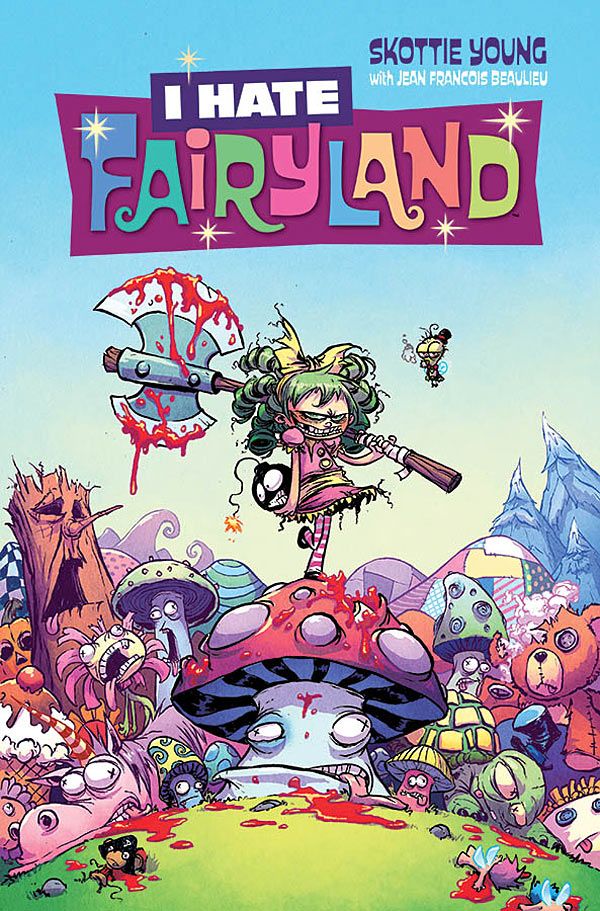"I Hate Fairyland" is the truest sense of Skottie Young's creative voice, an opportunity for the artist to show off his unique blend of street and animation styles under a script that is equally playful and gross without any inhibiting oversight. It works well in this debut issue as Young gives readers a fun, fast-paced story that covers a lot of ground in the fantasy world, establishing the protagonist as an unfortunate force of nature in a world of well-meaning anthropomorphic creatures and magical adventure.
Young introduces Gertrude, an Alice Lidell analogue who has been searching for a way home from Fairyland for 27 years. Though she hasn't aged physically, she has the emotional state of a frazzled 30-something on the edge of a meltdown, her psyche warped by the cartoonish reality of her environment and the seemingly endless nature of her quest. Young's ability to deliver the right amount of information works wonders for the introduction, a five page journey that gets across everything readers need to know to be caught up on Gertrude's status. The character has become a churlish, destructive presence in Fairyland, sowing chaos wherever she roams and leaving Larrigon Wentsworth III, her tiny bug guide, to clean up after her.
The book maximizes its animated potential, delivering over-the-top violence reminiscent of old Warner Bros. cartoons that approach "Itchy and Scratchy" levels in certain cases. Young is clearly having a blast creating this book, especially in scenes like Gertrude bazookaing the moon for editorializing about her. Like other great cartoons, the script toes and crosses the line of naughtiness, allowing readers to fill in the necessary gap: for instance, Alice cannibalizes a mushroom army, clearly causing her to trip out for several hours, and characters use "fluff" as an expletive. Young's sense of humor is slightly dark but playful, almost as if the proceedings were soundtracked by an out-of-tune barrel organ.
Throughout, Jean-Francois Beaulieu's colors provide Young's cartooning with depth and vibrancy. His palette -- brighter and more varied than the team's previous work on "Rocket Raccoon" -- enforces the fantastical nature of the world and really makes scenes like the opening stand out. Nate Piekos also does a great job with letters, particularly during the riddle sequence, bending both letters and bubbles to animate the dialogue and the tongue-in-cheek gravity behind it.
The first issue does a great job of conveying the potential of the series, giving readers a reason to continue following Gertrude. The splash page of her arrival -- broken and bloody after falling from the sky while both creatures and environment smile dumbly at her in greeting -- is a great single-image summation of the issue. The book makes Gertrude feel like she is put-upon while she lashes out at the world around her for not being what she wants it to be. It's a tale of an adult getting their childhood wishes fulfilled and struggling to reconcile that youthful desire with growth and the inability to leave the past behind. In an essay in the back of the issue, Young discusses his lifelong love of MAD Magazine, never more evident than in the pages of this comic book. With his current status in the industry and the recent expansion of the comic book property bubble in Hollywood, this book could become a breakout hit. Readers looking for the lost tone of classic animation work will consider a visit to Fairyland time well spent.

